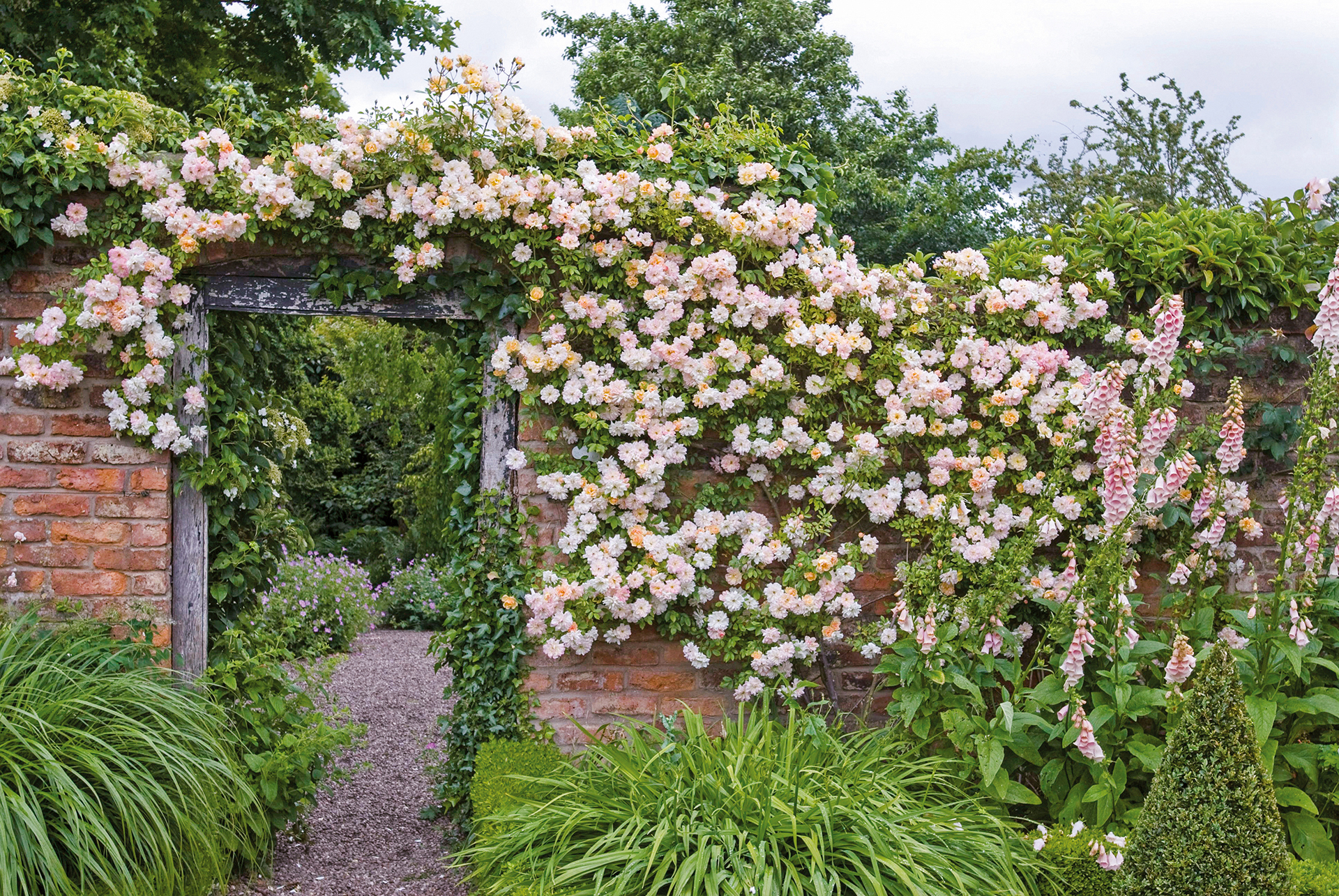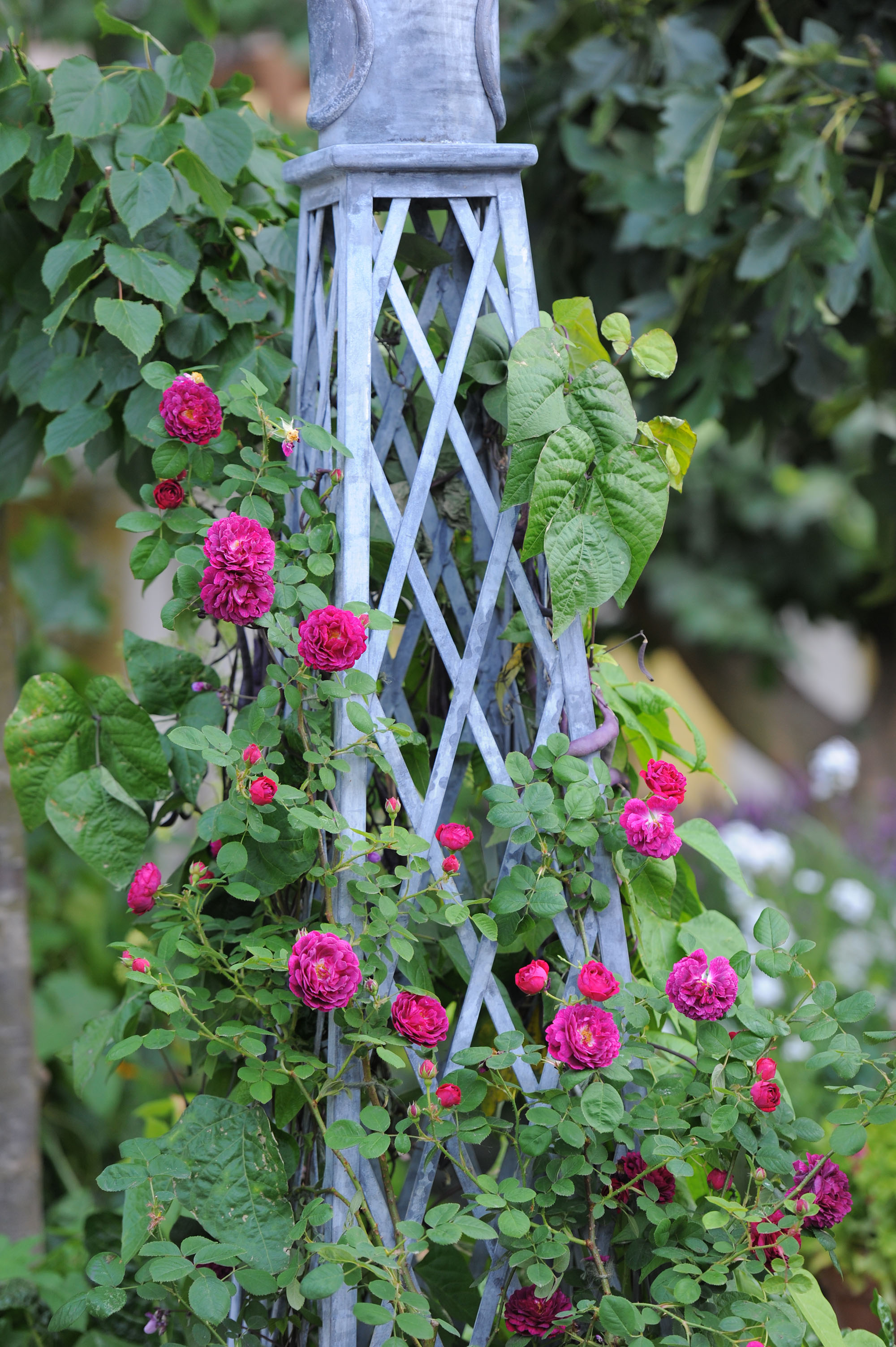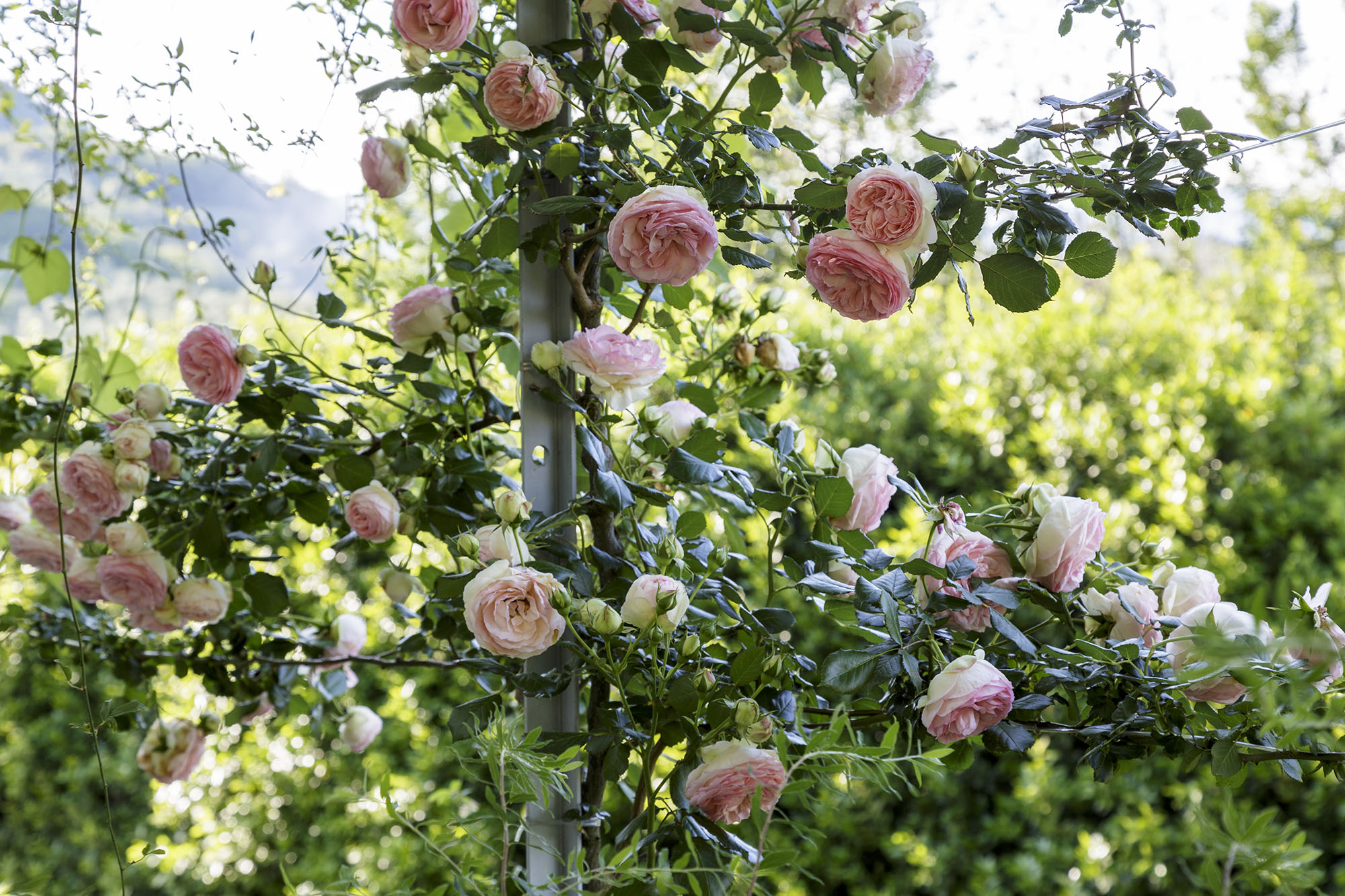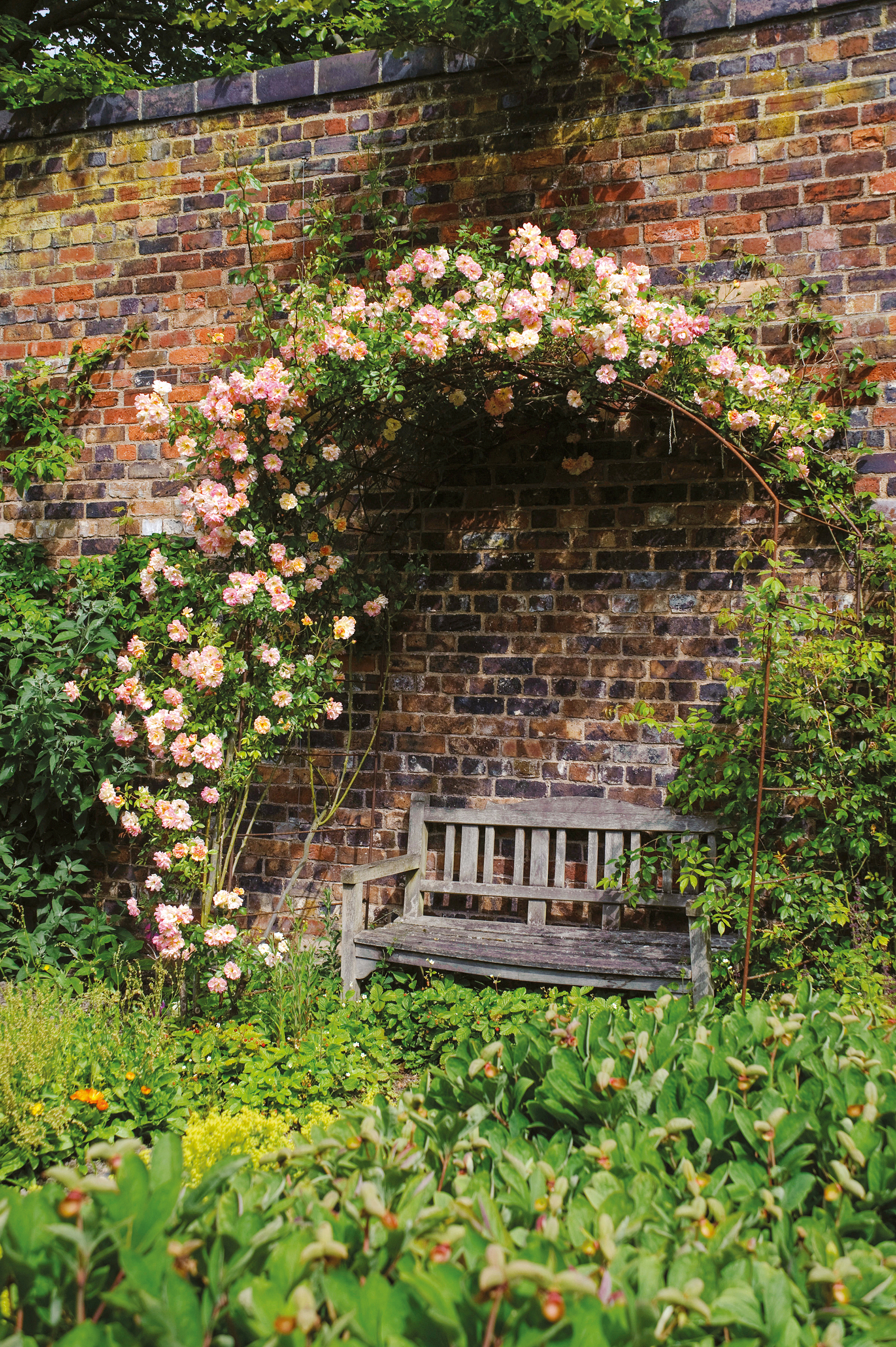How to prune climbing roses – for maximum flowers
Discover how to prune climbing roses – including rambling varieties – for healthy plants and a profusion of the most beautiful blooms


Learning how to prune climbing roses is vital if you want these glorious plants to stay healthy and reach their full flowering potential.
With their flouncy blooms and heavenly fragrance, climbing roses are some of the most evocative, romantic plants, and should be the star of your rose garden ideas.
Knowing how to prune roses correctly is a crucial aspect of caring for them. But climbing roses need to be treated a little differently to shrub roses, in order to encourage them to grow to the desired height and spread.
‘It is important to prune climbing roses to keep the rose plant in an overall good condition by encouraging strong vigor, form, and flower production,’ says Kristen Smith, new plants coordinator and rose product manager at Star Roses and Plants.
Knowing how to deadhead roses will also encourage more flowering shoots.
Bear in mind that if you are planting climbing roses, they will require a light touch in the first couple of years, until they establish and grow strong roots.
Pruning rambling roses also requires a slightly different approach. So make sure you understand your rose type before reaching for the pruners.
Design expertise in your inbox – from inspiring decorating ideas and beautiful celebrity homes to practical gardening advice and shopping round-ups.

How to prune climbing roses – expert guide
Despite their delicate appearance, climbing roses are hardy plants, so you should prune with confidence.
Even if you cut them back hard, they should recover – and indeed this is necessary to renovate a climbing rose.
But if you want to train a climbing rose into a beautiful shape and maximize blooms, then follow the correct procedure.
When to prune climbing roses
You should prune climbing roses at the same time as your shrub roses.
‘It is best to prune climbing roses in late winter or early spring, just before or as the leaf buds are beginning to swell and start growing,’ says Smith.
Knowing when to prune roses is important, as if you do it too early in the winter, you could expose the plant to frost damage.
‘It can also be more difficult to identify the less healthy stems that you will want to prune out,’ says Richard Austin from world-renowned rose grower David Austin.
Leaving it too late to prune your roses means you’ll sacrifice a lot of fresh growth. ‘However, if you still haven’t pruned by March it is still better to do so,’ says Austin.

What you need
Pruning climbing roses is a hands-on job – especially when the plants have grown to a mature size.
Firstly, you need to protect yourself. Thorns can cause painful cuts and carry dangerous bacteria, so as when planting roses, you will need good-quality gardening gloves. Leather gauntlets are ideal, as they will also cover your lower arms. Wear heavy-duty clothing, such as denim, to minimize tears and scratches.
If you do cut yourself, immediately clean the wound with an antibacterial spray.
Next, make sure you have a good pair of pruners. These need to be sharp – either sharpen them at home using a sharpening stone or diamond sharpener, or find out if the manufacturer offers a sharpening service.
You will need to clean your tools after each rose you prune, to avoid transferring disease.
Bear in mind pruners will only cut through green rose stems; for thicker branches and deadwood, use loppers or a hand saw.
1. Identify the main stems
To prune a climbing rose, you need to first identify the best main stems. But do not cut these, as they give the plant its height, allowing it to climb.
‘Once the rose has developed sturdy main canes, select the best 4-6 and prune out any other competing canes that cross over one another, are small and spindly, or are growing in the opposite direction of how you want to train the rose,’ says Smith.
‘You should prune out any dead, diseased, or broken canes from the winter.’
It is best to remove weak, thin stems, as they will be unable to hold the weight of the flowers in the summer.
Once the rose is three or four years old, remove old stems – one per year – towards the bottom of the rose. This will encourage fresh growth lower down.
‘When the main canes become very old, thick, and woody, it is best to remove them and start training younger and more pliable new main canes,’ adds Smith. ‘Older canes that are being removed should be pruned out as close to the base as possible.’

2. Prune the side shoots
Each main stem will have numerous side shoots – or lateral branches – and it is these that will be the main focus of your pruning.
‘Prune the side stems back to the main stem, leaving around 2 to 3 inches,’ says Austin. You are looking to leave 2 or 3 nodes – or bud eyes – on each stem.
Smith also recommends pruning out any of the lateral branches that are growing down or outwards.
Remove any foliage as you prune but do not compost the leaves, to avoid the spread of disease.
3. How to train climbing roses
‘Train your climbing rose by tying up the canes to fan out to at least a 45 degree angle, or to almost completely horizontal,’ says Smith. ‘The lateral branches that develop off of these canes are where most of the flower production will be coming from.'
There are some fabulous trellis ideas to help you train your rose. Alternatively you can fix discreet wires against a wall or fence, or grow your climbing rose over an archway or other garden structure – they make beautiful pergola ideas. Use soft ties that won't scar the stems.
Knowing how to prune climbing roses and train them up a wall or over a structure is a visual exercise. Rather than just cutting all the shoots to a prescribed length, look at the area you are trying to cover, and consider how to get the best shape from your climbing rose.
‘Have a good look at your rose and visualize what you want it to do,’ says Tony Hall, author of The Kew Gardener’s Guide to Growing Roses.
‘Does it need training in a certain direction, or more than one direction, to establish and build your framework? If so, tie the stems in the appropriate positions.
‘If the stems are too long, shorten the ends or, if soft and pliable enough, tie them back into the required position if space allows.’

4. Feed and mulch your rose
After pruning your climbing rose, feed it with a specialist rose product. Climbing roses often need a larger dose of feed than shrub roses, so check the packet instructions.
Mix the rose feed into the soil surrounding your rose, but avoid the product coming into contact with the main stems.
Finish by mulching your roses with compost or well-rotted manure, which will add further nutrients, suppress weeds and disease, and help keep in moisture. Apply it around 2-3 inches thick, covering the area beneath the main rose canopy.
Before mulching, remove any weeds and dead plant matter.
How do you prune a new climbing rose?
When pruning new climbing roses, do so lightly, otherwise you risk impeding growth.
‘It is best to leave a climbing rose unpruned for the first two to three years after planting to allow the plant to develop strong main canes,’ says Smith. ‘During the first few years only prune out dead, diseased, or broken canes.’
You should also keep on top of deadheading to encourage flower production.
If you feel your climbing rose does need to be pruned in its early years, leave the main stems intact, but cut back the side shoots by up to one third – overly long side shoots can be shortened to the same length as the others.
Remove foliage, so that disease doesn’t lie dormant.

Pruning rambling roses
Rambling roses are vigorous climbing roses that are useful for covering large surface expanses. Most varieties are single flowering – although there are exceptions – while most other climbing roses are repeat flowering, offering a spectacular show all summer.
It is very important to keep on top of pruning rambling roses, as they can quickly grow out of control, producing a mass of tangled branches with few flowers.
Unlike other roses, rambling roses need to be pruned just after flowering, as they will then produce new wood for next year’s blooms. Rambling roses will not flower on the current year’s growth.
‘In summer prune rambling roses after flowering – unless they are repeat-flowering varieties,’ says gardening expert Matt James.
‘Cut side shoots that have flowered back to two buds from the main stems. Tie in two to three strong shoots and remove the same number of old ones at ground level.’
You can train and feed rambling roses in the same way as climbing roses.
How to train a climbing rose over an arch
When pruning climbing roses over an arch or other garden structure, you will need to train them in the right shape.
As when pruning all climbing roses, remove any diseased, damaged or dead branches, and identify the main stems you want to focus on training.
As these main stems grow, you should gently twist and weave the shoots around the archway, to encourage them to grow in this shape.
Remove stubborn stems that won’t grow in the right direction at the base.

How to prune climbing roses for winter
There is no need to prune climbing roses for winter, as this can leave the plants more vulnerable to frost.
The exception to this is where storm damage has broken branches, and necessitates cutting them back.
Otherwise, wait until late winter to prune your climbing roses.
How to prune climbing roses in summer
Climbing roses don’t need pruning in the summer, although you can tidy them up with a light trim if they look messy and overgrown. If you time this just right, you may find it encourages one last flush of flowers.
Rambling roses are the exception and do need to be pruned in the summer, just after flowering. Doing this will ensure they develop new wood to carry next year’s flowers.
Do you cut back climbing roses each year?
Established climbing roses need to be pruned every year, but won’t benefit from being cut back hard unless there are issues with the plant and it requires renovating.
Your aim is for the main stems to grow tall and cover the intended surface or structure, and cutting them back will impede this.
However, you can cut back the side shoots each year to encourage maximum blooms.

Melanie has worked in homes and gardens media for two decades. Having previously served as Editor on Period Living magazine, and worked on Homes & Gardens, Gardening Etc, Real Homes, and Homebuilding & Renovating, she is now focusing on her passion for gardening as a Senior Editor at Gardening Know How. As a keen home grower, Melanie has experimented with pretty much every type of vegetable at some point – with mixed results. Often it is the simplest things that elude you, which may explain why she just can't seem to master zucchinis.